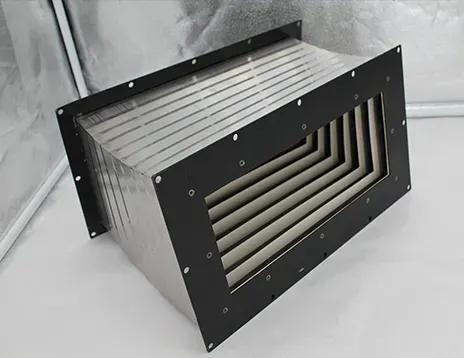Durable Metal Drag Chain Solutions for Efficient Material Handling in Various Industries
The Role of Metal Drag Chains in Industrial Applications
In the fast-paced and demanding world of industrial machinery, efficient mobility of cables, hoses, and other flexible components is crucial. One of the most significant innovations that effectively addresses this need is the metal drag chain. Metal drag chains, also known as energy chains or cable carriers, are designed to protect and manage wires and hoses while allowing them to move freely and safely within a variety of applications.
Design and Structure
The metal drag chain is constructed from high-strength materials such as aluminum, stainless steel, or other alloys, providing superior durability and resistance to wear and tear. The inherent properties of metal make these drag chains particularly beneficial in environments where traditional plastic options might not suffice, particularly in heavy-duty applications where extreme conditions are prevalent, such as high temperatures, abrasives, and harsh chemicals.
The design of a metal drag chain typically consists of interconnected links that form a flexible conduit. This flexibility allows for various bending radii, accommodating different spatial constraints and machine movements. Furthermore, the modular nature of these chains permits easy customization to meet specific routing and installation requirements, making them ideal for diverse industrial applications.
Advantages of Metal Drag Chains
1. Durability One of the primary advantages of using metal drag chains is their robust construction. They can withstand extreme environments, including exposure to high temperatures and aggressive substances, without compromising structural integrity.
2. Protection Metal drag chains provide excellent protection for cables and hoses, guarding them against abrasion, crushing, and friction. This protective quality significantly extends the lifespan of the components housed within the drag chain, reducing the need for frequent replacements and minimizing maintenance costs.
metal drag chain

3. Flexibility These chains are designed for dynamic movement, allowing for smooth operation in various applications. This flexibility ensures that cables and hoses can expand and contract as needed during operation, minimizing stress and risk of damage.
4. Safety In industrial settings, safety is paramount. Metal drag chains help keep cables and hoses organized and secure, reducing the likelihood of tripping hazards and ensuring a clean working environment.
5. Reduced Downtime By protecting cables and hoses and allowing for easy replacement and maintenance without the need for costly disassembly, metal drag chains contribute to reduced downtime in machinery. This efficiency is crucial in keeping production lines running smoothly.
Applications in Industry
The application of metal drag chains spans across various sectors, including manufacturing, robotics, automotive, and aerospace. In CNC machines, for instance, drag chains effectively manage the electrical and fluid lines, ensuring smooth operational flow. In robotic arms, these chains are essential for maintaining the movement of wires and tubes, facilitating complex dynamics with precision.
Furthermore, the automotive industry utilizes metal drag chains in assembly lines to protect and manage the plethora of cables and hoses required for vehicle manufacturing. Even in the aerospace sector, where minimizing weight while maintaining high levels of durability is critical, metal drag chains provide an effective solution that meets stringent regulations and performance standards.
Conclusion
In summary, metal drag chains play an indispensable role in ensuring the efficiency and safety of industrial operations. Their robust construction, protective qualities, and flexibility make them an ideal choice for a wide range of applications. As industries continue to evolve and demand more sophisticated machinery, metal drag chains will remain a vital component in the toolkit of modern engineering solutions, safeguarding the integrity of cables and hoses while enhancing overall operational efficiency.








